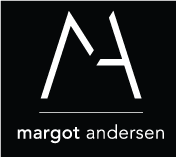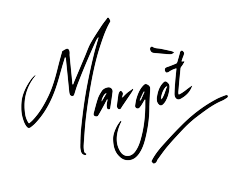“Make new friends, but keep the old. One is silver and the other is gold.” – Joseph Parry
Last week I was delighted to receive the following note from a former client who I hadn’t heard from in years.
Hello Margot, hope you’re well. I’m doing that reaching out to my network thing to check-in during this time. Genuinely hope though that you’re putting up a good fight. All good here, very thankful to be in the role and industry at this time – long may it continue. It’s been too long, even before all this, we should catch up soon.
It was simple and sincere in nature, and it made me stop for a moment and think just how easy it is to reconnect with those in our network – past and present. What made this even more interesting is that in the preceding days I had had conversations with several clients about re-engaging with ‘old’ networks. Despite the current COVID-19 landscape that has seen many of us actively seek out new ways to connect with colleagues, family and friends there was still a reluctance to engage with former networks.
For many there was a view that too much time had passed between the proverbial drinks or it was simply ‘too hard’. At the heart of it was a fear of being perceived as disingenuous or as a ‘taker’ only reappearing because of an ulterior need or agenda. This is just as real when we are embarking upon a career or role transition (which is ironic given the risk of transition many of us face in the current climate). However, the need for exploring new ways of working and collaborating has never been more pronounced, and dismissing the value of our past networks can be a massively missed opportunity.
Adam Grant, Wharton business leader and author of Give and Take explores how our success has become increasingly dependent on the interactions we have with others rather than on the individual drivers of success such as commitment, hard work and passion. In analyzing our networks he classifies them into three groups: strong, weak and dormant ties. It is this third group – defined as people you used to know but don’t keep in touch with – that he believes is the most easily dismissed and undervalued.
In a recent Inc. article he explained why he believes that dormant ties can be better for networking than weak (people we’ve met but don’t really know) or even strong ties. All too often our strong ties give us redundant knowledge – they are likely to know the same people, operate in similar environments and do similar things.
Dormant ties, however, tend to give us better information because they have a much more diverse network with different thinking and experience. Invariably they have been meeting new people, learning different things and ways of operating so they can potentially open up whole new worlds you didn’t know existed. Reaching out to dormant ties rather than weak ones is generally more comfortable because of the shared experience and common history even if there has been a lot of water that has passed under the proverbial bridge.
So how do we re-engage with our past networks genuinely and with purpose? I would encourage you to consider the seven tips below:
1. Plan to reconnect: Get clear on who you want to reconnect with and why – the initial contact will always be made easier with a clear sense of purpose.
2. Identify the best way to connect: Determine what is the most appropriate way to connect – do you pick up the phone, send an email or initially engage on social platforms such as LinkedIn?
3. Embrace the awkwardness: It will feel a bit awkward and will require you to ‘feel the fear and do it anyway!’ Authenticity is key. Pretending that you are the best of friends can actually be more harmful than helpful, so embracing the initial contact, as well as being considerate of your message is important.
4. Acknowledge the lapse in time: Be upfront about the lapse of time and provide some sort of context for that time period – studying, working abroad, family commitments, new roles etc. When you admit it’s been a while and you want to catch up, it‘s more genuine and authentic.
5. Explain ‘Why Now?’ Draw a link between what has prompted you to get in touch and why eg: I am currently working on a project with XX challenges and see that you have also done this. As such, I was keen to hear how you had managed this and what your learning’s were.
6. Ask how they are: Seek to understand your connection’s story. They will no doubt also have been developing new skills, knowledge and connections so it is important to build awareness on what they have been doing. It also makes it easier to create genuine dialogue and opens the door for you to reciprocate in kind.
7. Offer to reciprocate: None of us like to feel as though we are doing all the asking or taking so it is important to offer your knowledge, skills and experience in return.
Reaching out to reconnect is often not easy – it requires an element of vulnerability and bravery to pick up the phone or push send on that email. Invariably though you will find that the person you are reconnecting with is delighted to learn that their background and experience is valued.
When was the last time you reconnected with an old colleague or professional acquaintance?
As always, I would love to hear your thoughts.


